Understanding Edge Servers & How They Work

Today’s businesses operate with a huge amount of data collected by sensors and IoT devices in real-time. Dealing with continuous streams of data forces companies to look for new ways to optimize their IT infrastructure.
When processing huge amounts of data, the traditional computing model based on a centralized data center may not be the best solution. Bandwidth constraints, latency issues, and unpredictable network outages can affect such operations. Fortunately, adopting an edge-computing architecture can help overcome these challenges.
In this article, we will look at what an edge server is, how it works, and where it can be used. We will also compare edge servers to other network models. With this knowledge, you can decide if edge computing is suitable for your IT infrastructure.
What Are Edge Servers?
An edge server functions similarly to a typical server — it can store data, perform computations and connect to other networks. Its unconventional location distinguishes it from other servers. Unlike typical servers, edge servers are located outside the central data center, — precisely, at the end or “edge” of a network. As a result, all the storage and computing resources needed to run an app are located closer to the data source itself.
Traditional network models rely on sending raw data to a centralized server for further processing. In edge computing, data processing occurs close to the point of origin.
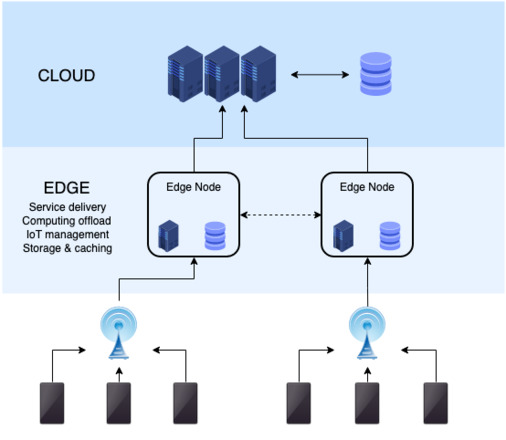
IoT edge servers are located in retail stores, factory floors, or hospitals – wherever end users need the processed data most. The server’s proximity to end users significantly reduces latency and shortens load times.
7 Common Edge Server Use Cases
Wondering where you can use edge services and if they’re right for your business? Let’s take a look at the most common use cases for edge servers.
Manufacturing
In manufacturing, ML algorithms and real-time analytics can add functionality to edge servers. This gives companies the ability to monitor their production processes. Processing sensor data enables early detection of manufacturing defects and improvement of product quality.
Self-Driving Cars
Autonomous vehicles produce between 5 TB and 20 TB of data per day. These data fields contain information about location, speed, vehicle conditions, and traffic conditions. Edge computing enables real-time collection of this data while the vehicle is in motion.
Stock Market Investments
Speed of response to price changes determines success in stock market trading. Edge computing provides real-time data processing and enables rapid decision-making.
Healthcare
In healthcare, the amount of patient data collected by devices, sensors, and other medical equipment has increased dramatically. These data streams demand edge computing. Real-time analysis of patient data and the use of ML algorithms help physicians take timely action to treat their patients.
Retail
Retailers generate vast amounts of data from monitoring systems, inventory tracking, and other real-time business systems. Edge computing can help analyze these various data streams and identify opportunities for business growth. Because store processes in a chain can vary from location to location, edge computing helps process data locally in each store.
Streaming Services
Streaming services such as Hulu, Amazon Prime, and Netflix place a heavy load on network infrastructure. Edge computing contributes to a better user experience. Storing content in locations close to users ensures fast load times.
Workplace Safety
Edge computing can aggregate and analyze data from on-site cameras, employee safety devices, and other sensors. In this way, companies can monitor workplace conditions or ensure that their employees are following established safety protocols. These solutions are particularly relevant for companies whose employees work in potentially hazardous locations (e.g., construction sites or oil rigs).
How Do Edge Servers Work?
In any network architecture, several different devices are interconnected by one or more predefined network patterns. To connect one network to another or the Internet, some kind of “bridge” is needed to allow data traffic from one place to another. In edge computing, the so-called edge devices form such a bridge. A switch, a router, or any other hardware that represents an access point to a network are examples of edge devices.
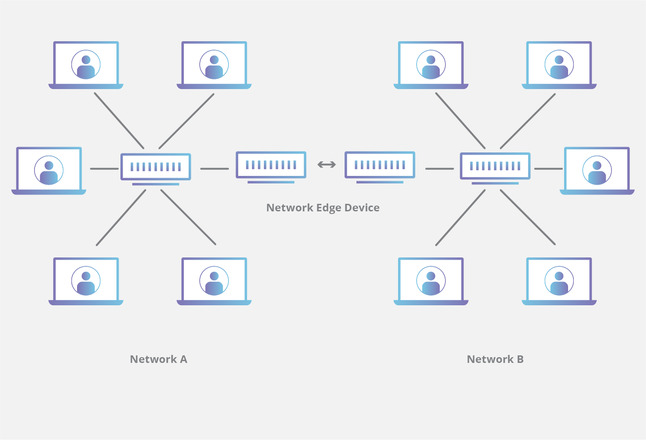
Let’s illustrate how edge servers work. Suppose a company doesn’t want to expose the entire back end to the public when it provides a particular service to customers. Instead, the company sets up an edge server connected to the back end and makes it accessible on the Internet as a website. When customers land on the site and make their requests, the edge server does the following:
- Pulls all the necessary data from the origin point;
- Processes the requests;
- Sends the outcomes back to the client.
Benefits And Drawbacks Of Using Edge Servers
Are you already excited about implementing an edge server in your organization? Before you decide on this approach, you should familiarize yourself with the associated advantages and disadvantages.

Edge Server Benefits
Here is why edge computing has become the new cutting-edge for servers:
- Lower latency – no need to send information to the data center for processing, as all computations take place on edge devices;
- Lower load on the origin server – an edge server handles the majority of client requests, reducing the load on the origin server;
- Reliability of computation – even if there is no Internet connection, data processing is not interrupted;
- Security of the point of origin – all information remains on the device and does not need to be transferred to the public cloud;
- Lower maintenance costs — since you only work with project-specific data, you don’t have to spend a fortune on huge bandwidth capabilities.
Edge Server Drawbacks
Should you treat edge servers as bleeding edge servers? Well, edge server architecture adoption involves certain challenges:
- Device security – even if no sensitive data needs to be sent to the Internet, the security of IoT devices as access points to the network becomes a challenge;
- Implementation costs – the company must purchase and configure devices and hire competent professionals;
- Potential data loss – if an edge server accidentally deletes information to handle huge data streams, it may be lost without the ability to recover it.
What Is Edge Server Architecture?
In traditional enterprise architectures, data generation occurs at the client endpoint – for example, a user’s computer. This data passes through the global or enterprise LAN for further processing by the corporate application. Then the client endpoint receives the computation results.
But the number of Internet-connected devices and the volumes of data they generate is growing rapidly. As a result, traditional data center infrastructures have difficulty processing these huge data arrays. To overcome these challenges, architects at IT are shifting their focus from centralized infrastructure to edge server infrastructure.
Edge server architecture takes storage and computes resources out of the centralized data center and moves them closer to where the data is generated. The logic here is simple: if you can’t bring the data closer to the data center, you should bring the data center closer to the data.
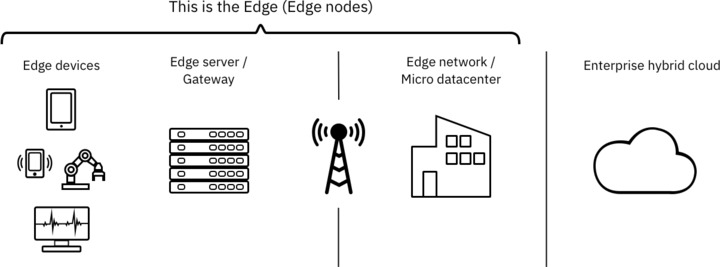
The edge architecture represents an ecosystem of infrastructure elements distributed from the data center outward to all edge sites. This ecosystem includes data storage, computing power, applications, devices, sensors, and connectivity to a data center or cloud.
The devices and sensors used in the edge architecture collect and process information in real-time and have sufficient bandwidth, memory, and computing resources.
What Are The Types of Edge Servers?
An edge server is a great solution for a particular use case – whether it’s processing sensor data in manufacturing or online banking services. However, different use cases may require different types of servers. Let’s take a look at the possible edge server solutions.
CDN Edge Servers Or Regional Edge
The concept of a Content Delivery Network (CDN) has been around for years. It is a network infrastructure with a distributed server base designed to reduce content delivery time. When you think of an edge server versus a CDN, you need to understand that a CDN is simply a type of edge architecture.
Here’s how CDN edge servers work. CDN providers host servers in different regions – for example, Europe, Asia, or both. To process a user request, a CDN edge server connects to the nearest regional server. Without a CDN, data transmission could have taken a slower or more complicated path between source and destination. So a high-performance network from a CDN provider ensures that content loads quickly.
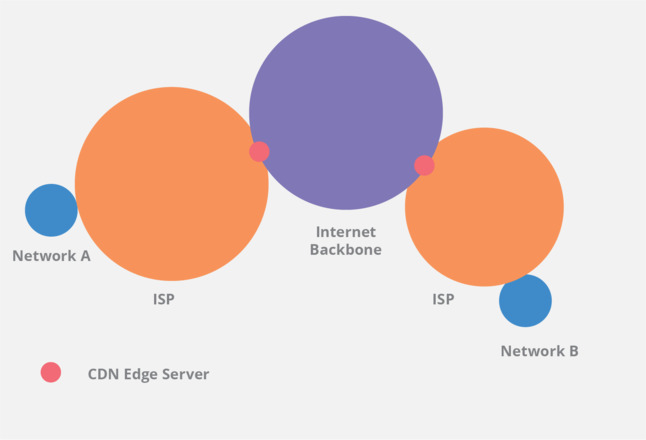
Network Edge Servers
A network edge server, also known as a near edge, is closest to the network core. It serves as a bridge between edge devices or LANs and the Internet.
This server allows various data sources at the edge of the network to be interconnected. The data points can be wired or wireless LANs, private data centers, and possibly WAN (in case remote sites need to plug in). The data is pre-processed before being sent to the Internet and shared with a central server.
Overall, network edge servers enable system optimization and better control over data traffic.
On-premise Edge Servers
On-premise edge computing is common for enterprises because it facilitates communication between IoT edge devices within the infrastructure. It also provides on-site computing resources to perform data processing and analysis locally. For companies that require prompt assessment of local end data (e.g., retailers or industrial manufacturers ), on-site edge servers are a good option.
Notable benefits of on-premise edge computing include latency of fewer than 5 milliseconds, improved connectivity between edge devices, and ultimate data protection.
Device Edge Node
Device edge nodes are not necessarily “servers” by nature. These nodes may take the form of a minicomputer or may simply be additional processing hardware mounted on the end device.
Device-edge nodes can perform specific tasks, such as motors on the shop floor, vending machines, or X-ray systems. Collecting and analyzing data from these devices helps ensure smooth operation and detect maintenance problems in advance. For fast data processing, IoT edge servers are located close to these devices.
Edge Servers Vs Other Networking Models
Let us now take a look at how an edge server compares to other network models.
Edge Server Vs Cloud Server
Cloud computing allows companies to move data processing and storage to remote servers. Cloud services are inherently scalable, and cloud providers can offer a range of pre-built services for IoT operations.
While the cloud offers great resources for solving complex analytics tasks, the nearest data center may be many miles away from the data collection site. In addition, there may be unreliable communication links or limited bandwidth in certain areas – for example, oil platforms, ships at sea, or remote farms. Thus, the cloud architecture can become unwieldy for compute-intensive processes, and latency becomes a major issue.
In these cases, an edge server can be a way out. By performing computations locally, an edge infrastructure ensures reliability and fast data processing.
Edge Server Vs Origin Server
An origin server is a computer responsible for processing web requests. In the traditional network model, end users can connect directly to one or more servers. In this configuration, user requests go through a simple process:
- To access your web service, a user connects to the server;
- The server then processes the user’s requests and delivers the desired output;
- The user receives the data and uses it in a browser or app.
The response time may vary depending on how far the origin server is from the user. Depending on which protocol a user connects through (HTTP, HTTPS, or FTP), the process can be more complex. In addition, establishing a secure Internet connection with SSL/TLS can increase latency due to the additional RTT (round-trip time) required.
Nevertheless, the network structure for an origin server is quite simple.
When you add edge servers into the equation, the way the network handles user requests can change. The configurations of the edge servers determine how the process will look.
Typically, a CDN edge server and an origin server go hand-in-hand in distributing content to users. Although the two servers have similar capabilities, they take on different roles in the content delivery process.
By storing static assets in key locations near the client, a CDN server helps reduce latency.
Edge Servers Vs Proxies
A premium or free proxy server acts as an intermediate server that disconnects you from the Internet. Without a proxy server, traffic from your device would go almost directly to websites. With a proxy server, traffic is routed from your device to the proxy server and then to the web server you requested.
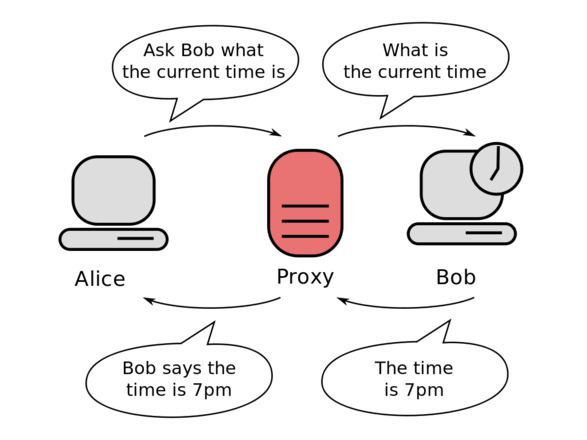
There are two types of proxy servers:
- A forward proxy — a server that sits in front of a group of client computers;
- A reverse proxy — a server that sits in front of web servers and forwards requests from a client (a browser) to those web servers.
All traffic you send to or receive from the network goes through the reverse proxy server. It is the reverse proxy server that is the segment of the CDN architecture.
So, a reverse proxy is similar to an edge server but still different from it.
An edge server is a server that is located closer to the client than the application server. Such placement helps to increase the speed of data processing. In addition, the edge server does not necessarily have the functionality of a proxy.
The Future Of Edge Computing Servers
Wondering how edge computing will evolve in the foreseeable future? Check out the trends to watch for in 2023.
Continued Growth Of Edge Computing
As edge computing becomes more prevalent, companies are actively using it along with cloud computing. Gartner analysts predict that by 2025, enterprises will generate and process about 75% of their data without relying on centralized data centers. To meet the needs of enterprise customers, cloud service providers are expanding their portfolios by offering solutions with edge technologies.
Widespread 5G Traffic Usage
The development of 5G technologies will facilitate the deployment and use of edge networks in the coming years. In particular, having an edge server near the cell tower will help reduce latency for projects that involve 5G traffic — autonomous vehicles, cameras, and more.

Hybrid Solutions
The introduction of an edge server infrastructure doesn’t mean that the cloud has to be replaced. Together with an edge server, cloud services can be powerful hybrid solutions. If an organization’s needs require reliable, high-performance data centers, the cloud will remain a priority. When the speed of decision-making is important, edge computing will prevail — at the same time, the cloud will continue to store critical data.
Hardware-As-A-Service
Another trend to watch for is the adoption of the Hardware-as-a-Service (HaaS) model. The HaaS model involves providing hardware infrastructure in the cloud. In this model, business customers not only rent the infrastructure they need but also rent its maintenance from the provider. Overall, HaaS is a great way to avoid large upfront investments to buy all the required hardware at once.
Conclusion
Edge computing offers an alternative approach to managing enterprise infrastructure IT. Processing customer data at the edge of the network helps organizations address network bandwidth, latency, and reliability issues. Thanks to edge computing, real-time data processing has become available to a wide range of industries.
Should your company adopt edge computing? The answer depends on your company’s specific needs. Identify the business areas that need improvement and see if they depend on data processing speed. If so, it makes sense to adopt edge server solutions. Or perhaps you’ll stick with a hybrid solution that leverages the benefits of edge and cloud.
We hope our guide will help you decide on the right option for your IT infrastructure.
